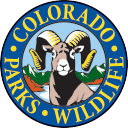Surveillance, monitoring, and natural history investigations of bats related to white-nose syndrome within the Colorado River Valley Field Office, 2019-2021
(eBook)
Description
Also in this Series
More Details
Notes
Citations
Neubaum, D. J., Keisling, K. 1., & Metza, M. 1. (2021). Surveillance, monitoring, and natural history investigations of bats related to white-nose syndrome within the Colorado River Valley Field Office, 2019-2021 . Colorado Parks and Wildlife.
Chicago / Turabian - Author Date Citation, 17th Edition (style guide)Neubaum, Daniel J, Kellen 1983- Keisling and Monique 1992- Metza. 2021. Surveillance, Monitoring, and Natural History Investigations of Bats Related to White-nose Syndrome Within the Colorado River Valley Field Office, 2019-2021. Colorado Parks and Wildlife.
Chicago / Turabian - Humanities (Notes and Bibliography) Citation, 17th Edition (style guide)Neubaum, Daniel J, Kellen 1983- Keisling and Monique 1992- Metza. Surveillance, Monitoring, and Natural History Investigations of Bats Related to White-nose Syndrome Within the Colorado River Valley Field Office, 2019-2021 Colorado Parks and Wildlife, 2021.
MLA Citation, 9th Edition (style guide)Neubaum, Daniel J., Kellen 1983- Keisling, and Monique 1992- Metza. Surveillance, Monitoring, and Natural History Investigations of Bats Related to White-nose Syndrome Within the Colorado River Valley Field Office, 2019-2021 Colorado Parks and Wildlife, 2021.
Staff View
Grouping Information
| Grouped Work ID | 4054e639-e533-8016-323c-77347a3af5ec-eng |
|---|---|
| Full title | surveillance monitoring and natural history investigations of bats related to white nose syndrome within the colorado river valley field office 2019 2021 |
| Author | neubaum daniel j |
| Grouping Category | book |
| Last Update | 2023-08-16 14:10:01PM |
| Last Indexed | 2024-05-15 01:00:01AM |
Book Cover Information
| Image Source | upload |
|---|---|
| First Loaded | Jul 20, 2022 |
| Last Used | May 12, 2024 |
Marc Record
| First Detected | Sep 05, 2021 03:50:34 PM |
|---|---|
| Last File Modification Time | Sep 05, 2021 03:50:34 PM |
MARC Record
| LEADER | 02789nam a2200457Ii 4500 | ||
|---|---|---|---|
| 001 | on1262873410 | ||
| 003 | OCoLC | ||
| 005 | 20210805093706.0 | ||
| 006 | m o d s | ||
| 007 | cr ||||||||||| | ||
| 008 | 210805s2021 couab ob s000 0 eng d | ||
| 035 | |a (OCoLC)1262873410 | ||
| 040 | |a DDB|b eng|e rda|c DDB | ||
| 043 | |a n-us-co | ||
| 049 | |a DDBA | ||
| 086 | |a NR14.2/W58/2021/INTERNET | ||
| 086 | |a NR14.2/W58/2021/INTERNET|2 codocs | ||
| 100 | 1 | |a Neubaum, Daniel J. | |
| 245 | 1 | 0 | |a Surveillance, monitoring, and natural history investigations of bats related to white-nose syndrome within the Colorado River Valley Field Office, 2019-2021 /|c prepared for USDI Bureau of Land Management ; prepared by Daniel J. Neubaum, Kellen Keisling & Monique Metza. |
| 264 | 1 | |a [Denver, Colo.] :|b Colorado Parks and Wildlife,|c 2021. | |
| 300 | |a 1 online resource (30 pages) :|b illustrations, maps | ||
| 336 | |a text|b txt|2 rdacontent | ||
| 336 | |a still image|b sti|2 rdacontent | ||
| 336 | |a cartographic image|b cri|2 rdacontent | ||
| 337 | |a computer|b c|2 rdamedia | ||
| 338 | |a online resource|b cr|2 rdacarrier | ||
| 504 | |a Includes bibliographical references ( pages 27-29) | ||
| 520 | |a Bat populations in the western portion of the US are threatened by the rapid westward expansion of White-nose Syndrome (WNS), a disease implicated in the loss of over a million bats since 2006. Pseudogymnoascus destructans (Pd), the fungus believed responsible for WNS, has been confirmed in southeastern Wyoming, south central Kansas, western Oklahoma and the Texas panhandle, potentially placing at least 13 of the 18 bat species native to Colorado at risk for significant population-level declines. The continued westward movement of WNS emphasizes the need for improved information on the status of bats in Colorado, a systematic and thorough survey and assessment of the importance of caves and abandoned mines to Colorado's bat populations, and a coordinated effort to monitoring for WNS in the state. | ||
| 588 | 0 | |a Online resource; title from PDF cover (viewed August 2021) | |
| 650 | 0 | |a Bats|x Conservation|z Colorado River Valley (Colo.-Mexico) | |
| 650 | 0 | |a White-nose syndrome|z Colorado. | |
| 650 | 0 | |a Bats|x Conservation|z Colorado. | |
| 700 | 1 | |a Keisling, Kellen|q (Kellen Matthew),|d 1983- | |
| 700 | 1 | |a Metza, Monique|q (Monique Lynn),|d 1992- | |
| 710 | 1 | |a Colorado.|b Parks and Wildlife. | |
| 710 | 1 | |a United States.|b Bureau of Land Management.|b Colorado River Valley Field Office. | |
| 856 | 4 | 0 | |u http://hdl.handle.net/11629/co:34942_nr142w582021internet.pdf|z Access online |
| 907 | |a .b11206093|b 08-30-21|c 08-05-21 | ||
| 945 | |g 1|j 0|l csdig|o -|p $0.00|q -|r -|s j |t 0|u 0|v 0|w 0|x 0|y .i11970984|z 08-05-21 | ||
| 994 | |a C0|b DDB | ||
| 998 | |a cs|b 08-05-21|c m|d a |e -|f eng|g cou|h 0|i 1 | ||

.png)